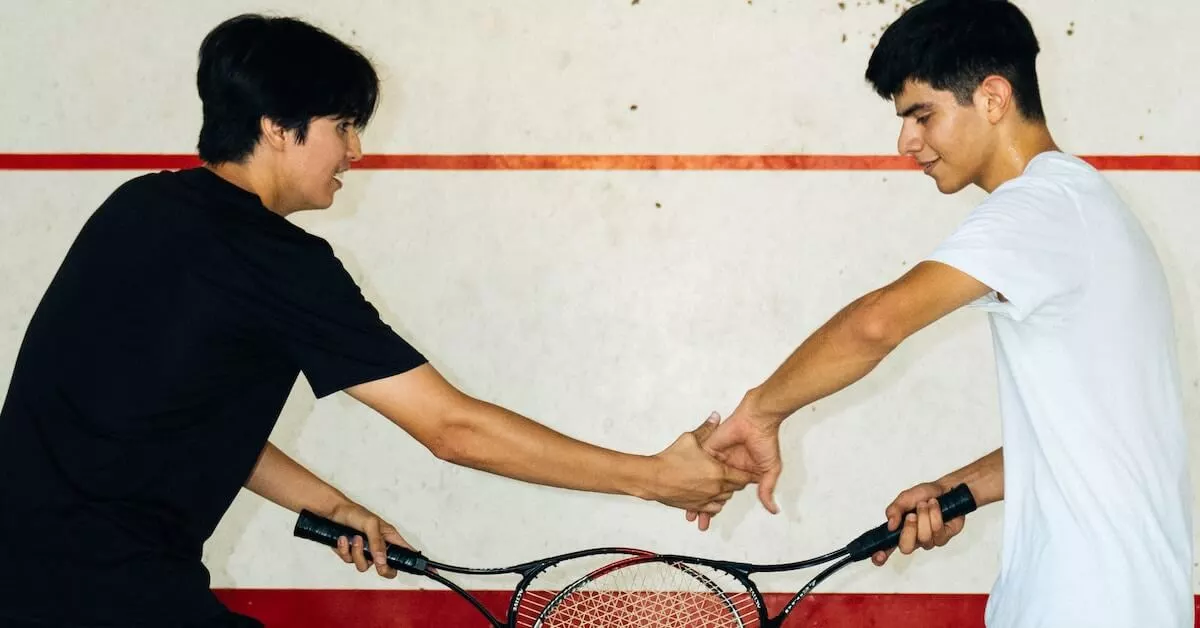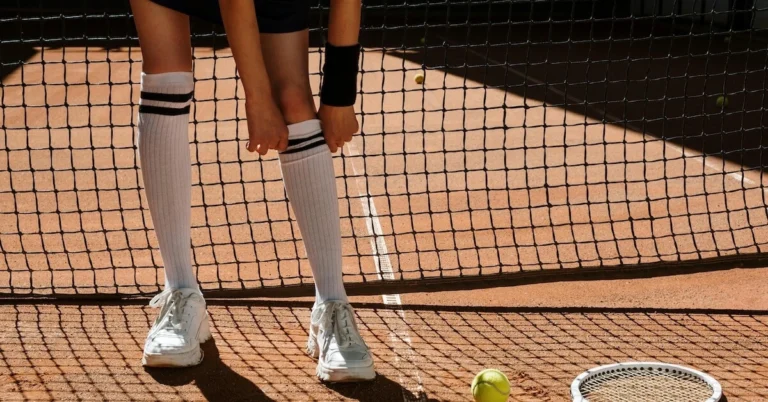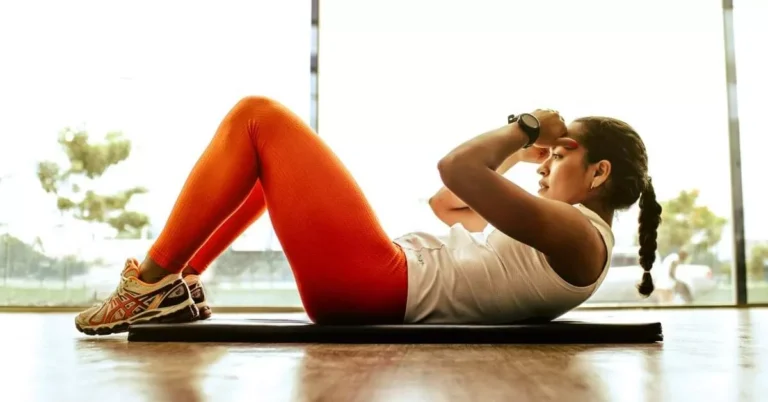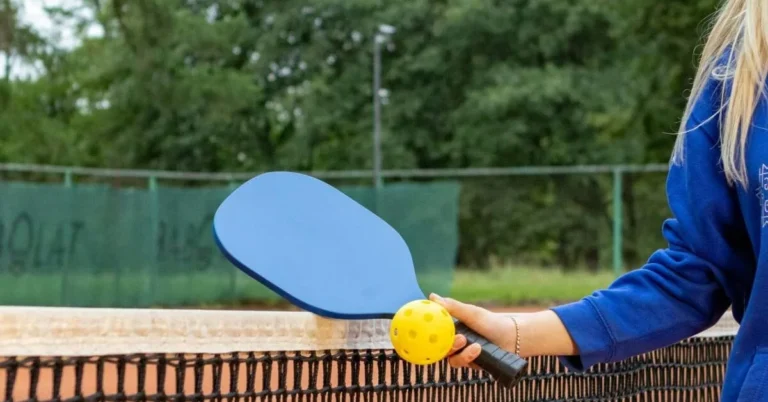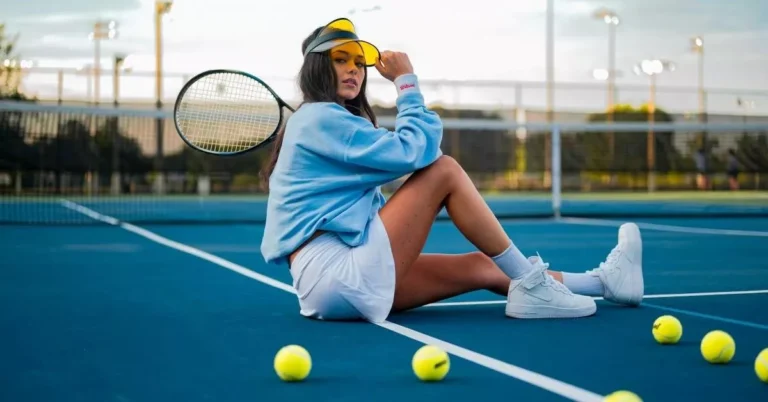Are you ready to step into the world of racquet sports beyond tennis? Picture this: a game that combines speed, strategy, and a whole lot of intensity. That’s right, I’m talking about Squash! I stumbled upon this exhilarating sport and let me tell you, it’s a game-changer.
As a die-hard tennis enthusiast, I couldn’t resist the urge to explore whether Squash could hold a candle to my beloved sport. So, grab your racquet and get ready for a light-hearted yet insightful comparison of Squash – A Viable Alternative to Tennis. It’s time to serve up some fun and settle the score once and for all!
Pro:
✅ best all-rounder ✅ stability ✅ high support
Con:
❌ maybe you need some time to get used to it
Squash and Tennis: An Overview
If you’re looking for an alternative to tennis, then squash might be the perfect sport for you. Squash and tennis share some similarities, but they also have some key differences that make them unique.
The Court
One of the most significant differences between squash and tennis is the court. Squash is played in an enclosed court with four walls, while tennis is played in an open court divided by a net. The dimensions of the two courts are also different. A squash court is smaller than a tennis court, and it has a different shape. The walls in a squash court are used to keep the ball in play, while in tennis, the ball is hit over the net.
The Equipment
Another difference between squash and tennis is the equipment used. Squash players use a smaller, heavier racquet than tennis players. The ball used in squash is also smaller and denser than a tennis ball. Squash balls are designed to bounce less than tennis balls, which makes the game faster and more challenging.
The Gameplay
The gameplay in squash and tennis is also different. In squash, the two opponents are on the same court at the same time, and they alternate shots using the lines and “tin” on the front wall of the squash court to keep the serve in play. In tennis, the opponents occupy opposite sides of the court split by the tennis net, and they hit the ball over the net into the opponent’s court. Players score points based on how they hit the ball and how it is returned.
Squash and Tennis: The Techniques
When it comes to squash, the techniques used are similar to those in tennis, but with some key differences. In this section, we will explore the different shots and returns, serving and placement, as well as grip and swing techniques used in squash.
Shots and Returns
In squash, there are several types of shots and returns that players use to keep the rally going. The most common shots are the drive, drop shot, and lob. The drive is a powerful shot that is hit low and hard, while the drop shot is a softer shot that is hit with less power and is meant to land close to the front wall. The lob is a high shot that is hit over the opponent’s head and is meant to force them to move to the back of the court.
Serving and Placement
Serving in squash is similar to tennis, with players taking turns to serve the ball into the opponent’s service box. However, in squash, the serve must hit the front wall before landing in the service box. Players can also use different types of serves, such as the lob serve or the hard serve, to keep their opponents on their toes.
Placement is also important in squash, as players must aim their shots to different areas of the court to keep their opponents guessing. A good placement strategy can help players win points and keep the rally going.
Grip and Swing
The grip and swing techniques used in squash are different from those used in tennis. In squash, players use a grip that is similar to a handshake grip, which allows for better control of the racquet. The swing is also different, with players using a shorter swing that is more compact than the swing used in tennis. The follow-through is also shorter, as players need to be ready to move quickly to the next shot.
Squash and Tennis: Differences and Similarities
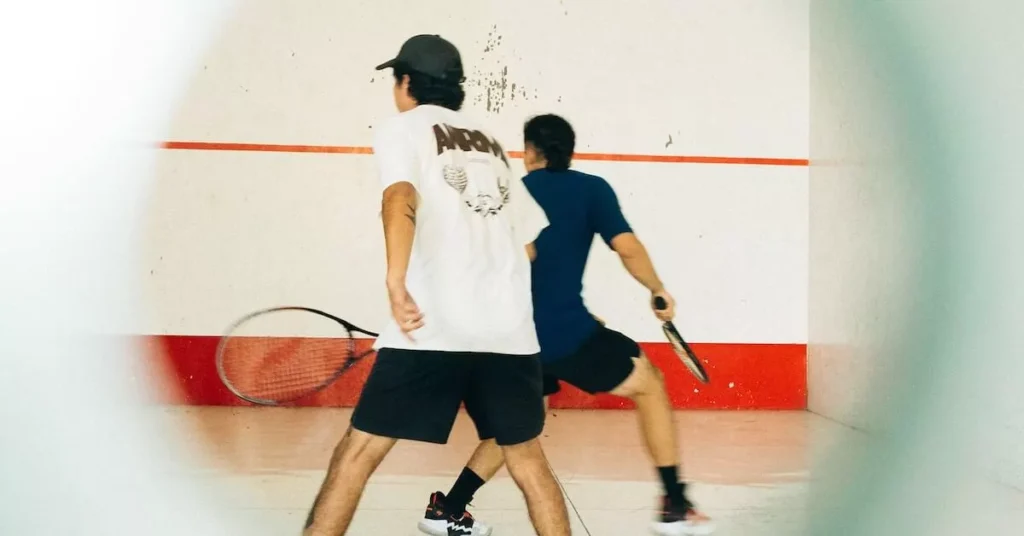
If you’re considering switching from tennis to squash or just starting to play racket sports, you might be wondering how these two sports compare. While both sports involve hitting a ball with a racket, there are several differences and similarities to note.
Differences
One of the most significant differences between squash and tennis is the court size. Squash courts are much smaller than tennis courts, measuring 32 feet long by 21 feet wide, while tennis courts are 78 feet long by 36 feet wide. The smaller court size in squash means that players have less time to react to shots and must be quick on their feet.
Another difference is the ball used in each sport. Squash balls are smaller, heavier, and less bouncy than tennis balls, which means they require more accuracy and control when hitting. Tennis balls are larger, lighter, and more bouncy, making them easier to hit and allowing for longer rallies.
The scoring system is also different between squash and tennis. In squash, games are played to 11 points, while in tennis, games are played to 15, 30, 40, or advantage. Squash matches are typically played as best of five games, while tennis matches can be best of three or best of five sets, depending on the tournament.
Similarities
Despite the differences, there are also several similarities between squash and tennis. Both sports require quick reflexes, good hand-eye coordination, and the ability to move quickly around the court. They also both involve hitting a ball with a racket and can be played as singles or doubles.
Additionally, both sports require specific equipment, including rackets and shoes. While the rackets used in squash and tennis are slightly different in size and shape, they both serve the same purpose of hitting the ball. Similarly, shoes for both sports need to provide good traction and support to allow for quick movements and changes in direction.
Squash and Tennis: Strategy and Tactics
In squash, strategy and tactics play a crucial role in winning matches. Understanding the fundamentals of the game is essential to develop a successful strategy. You need to control the “T” or the middle of the court to be able to dominate the game. Being able to serve effectively and master the return of serve will give you an advantage over your opponent. Establishing good length and being able to maintain it throughout the game is also important.
When it comes to tactics, it is important to be able to read your opponent’s game and adjust your strategy accordingly. You should be able to identify your opponent’s strengths and weaknesses and play to your strengths while exploiting their weaknesses. For example, if your opponent has a weak backhand, you should try to hit the ball to their backhand side more often.
Another important tactic is to keep your opponent moving around the court. By hitting the ball to different areas of the court, you can force your opponent to cover more ground, which can tire them out and make them more prone to making mistakes.
It is also important to be able to vary the pace and height of your shots. By mixing up your shots, you can keep your opponent guessing and prevent them from settling into a rhythm. For example, you can hit a hard, low shot followed by a soft, high shot to keep your opponent off balance.
Squash and Tennis: Physical Aspects
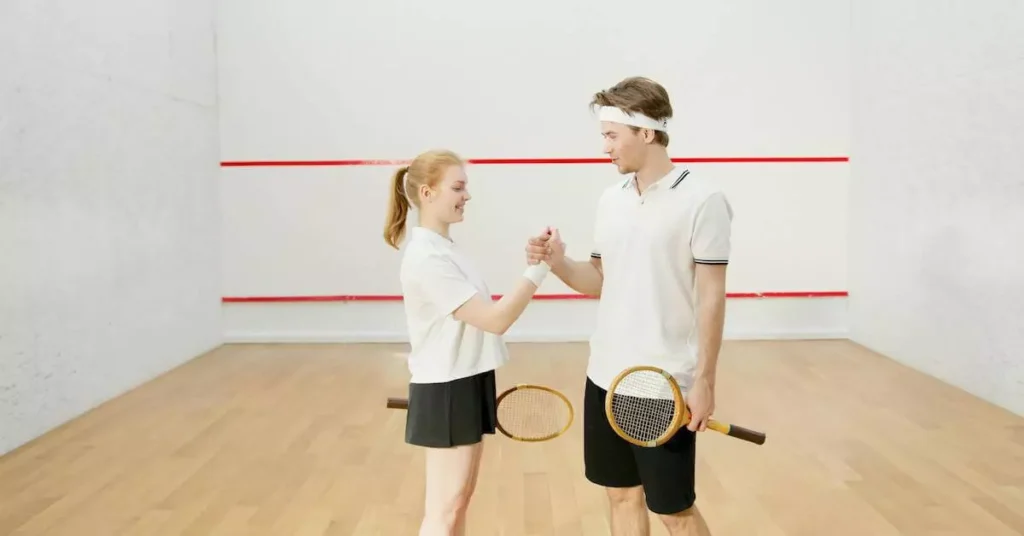
Squash and tennis are both racquet sports that require a great deal of physical fitness and skill. Squash, however, is a more intense and demanding sport than tennis, which makes it an excellent alternative for those looking for a more challenging workout.
Workout and Fitness
Squash is a high-intensity workout that can help improve your cardiovascular fitness, endurance, and overall health. The constant movement and quick changes of direction required in squash can help you burn calories and build muscle. According to a study by Harvard Medical School, playing squash for just 30 minutes can burn up to 500 calories.
Skills and Reflexes
Squash requires a combination of skills such as hand-eye coordination, reflexes, reaction time, agility, and footwork. These skills are essential in squash and can help improve your overall physical performance. Squash can also help you develop your mental skills such as strategy and focus, which can be beneficial in other areas of your life as well.
Squash and Tennis: History and Popularity
Origins of the Sports
Squash is a racket sport that originated in Harrow School, England in the 1830s. It was initially played in narrow, walled courtyards, which gave the game its name. The first squash ball was made from natural rubber until students discovered that a deflated, ‘squashed’, flat racketball returned faster and was more responsive than a regular ball. The students had unknowingly created squash – a game that would captivate the world.
On the other hand, tennis has a much longer history, dating back to 12th century France. The game evolved over time, and by the 16th century, it was being played with rackets and balls. The first lawn tennis tournament was held in 1877 at Wimbledon, and it quickly gained popularity worldwide.
Current Popularity
Squash has grown in popularity over the years, with millions of people playing the sport worldwide. It has become a popular alternative to tennis, particularly in urban areas where space is at a premium. Squash tournaments have become famous, with the most prestigious being the World Squash Championships.
Tennis, however, remains the more popular of the two sports, with major tournaments such as Wimbledon, the US Open, and the Australian Open drawing large crowds and worldwide attention. The sport has also been linked to high-status institutions, with posh schools like Harvard and Oxford being some of the first to adopt the game.
Squash and Tennis: Learning and Mastering
Learning squash can be a challenging but rewarding experience. The learning curve for squash is steeper than that of tennis due to the smaller court size and faster pace of the game. However, with practice and dedication, you can master the game and enjoy the many benefits it has to offer.
One of the most important aspects of mastering squash is developing proper technique. Unlike tennis, squash requires a more compact swing and greater use of wrist and forearm muscles. You will need to focus on generating power from your legs and core to execute effective shots.
Another key factor in mastering squash is understanding the force and length of your shots. Squash is a game of angles and precision, and you must learn to control the ball’s trajectory and speed to keep your opponent off balance. You must also be able to anticipate your opponent’s shots and react quickly to defend against them.
In squash, the winner is the player who can outmaneuver and outthink their opponent. To do this, you must develop a strategic mindset and be able to read your opponent’s movements and anticipate their shots. You must also be able to adapt to changing conditions on the court, such as changes in lighting or ball speed, and adjust your game accordingly.
FAQ
What are the differences between squash and tennis?
Squash and tennis are both racket sports, but there are several differences between them. Firstly, the balls used in each sport are different. Squash balls are smaller and softer than tennis balls. Secondly, the courts are different sizes and shapes. Squash courts are smaller and have four walls, while tennis courts are larger and have no walls. The scoring systems are also different, with squash using a point-a-rally system, while tennis uses a game and set system. Finally, the techniques used in each sport are different, with squash requiring more agility and quick reflexes, while tennis requires more endurance and power.
Can playing squash improve my tennis game?
Yes, playing squash can improve your tennis game. Squash requires a high level of fitness, speed, agility, and hand-eye coordination, all of which are important skills for tennis players. Squash also requires quick reflexes and the ability to react to unpredictable shots, which can help tennis players improve their reaction times and anticipation skills. Additionally, playing squash can help tennis players develop better footwork and movement on the court.
Is squash a good alternative for tennis players?
Yes, squash is a good alternative for tennis players. Squash is a great way to stay fit and active, and it provides a challenging and exciting workout. Squash also offers a different set of skills and challenges than tennis, which can help players improve their overall athleticism and coordination. Squash is also a great way to meet new people and socialize, as many squash clubs offer leagues and tournaments for players of all skill levels.
What are the benefits of playing squash?
There are many benefits to playing squash. Firstly, squash is a great cardiovascular workout that can help improve your overall fitness and health. Squash also helps to build strength, agility, and coordination, which are important skills for any athlete. Additionally, squash can help to relieve stress and improve mental health, as the fast-paced nature of the game requires quick thinking and decision making.
How does the physical demand of squash compare to tennis?
Squash is generally considered to be a more physically demanding sport than tennis. Squash requires short, sharp bursts of energy and quick movements, which can be very challenging and tiring. In contrast, tennis requires more endurance and stamina, as matches can last for several hours. However, both sports require a high level of fitness and athleticism, and both can provide a great workout for players of all levels.
And that’s a wrap, folks! Squash and tennis, two sports with their own unique flair and challenges. Whether you’re a fan of the intense, fast-paced action of squash or the graceful finesse of tennis, there’s no denying that both sports offer a fantastic way to stay fit and have a blast on the court.
So, what’s your take? Are you Team Squash or Team Tennis? Any epic showdowns or hilarious mishaps you’d like to share? We’d love to hear your thoughts in the comments below! In the meantime, keep swinging those rackets and hitting those balls with all your might. And remember, no matter which sport you choose, the most important thing is to have fun and enjoy the game!

